That's Cate Blanchett, for the upcoming new publicity for Armani Si, a nouveau chypre fragrance built around a blackcurrant note, that has already taken a significant share in the market. The Italian maestro's white shirts from the previous ads give way to something a bit more casual, it seems; a silvery grey cashmere jumper with short sleeves or a dress, from the looks of it?And a killer raincoat for when in the car.
Anyway, sartorial matters aside, the new commercial will air in September 13th, filmed by Irano-American flim maker Massy Tadjedin. Darius Khondji is the director of photography and the clip has been filmed in Australia. Tim Munro is behind the print campaign. Photos by Josh Prendeville, from Cate Blanchett's fan site.
Showing posts with label armani. Show all posts
Showing posts with label armani. Show all posts
Wednesday, July 29, 2015
Saturday, September 3, 2011
Armani Prive La Femme Bleue: fragrance review
The Armani Privé collection falls under the scope of "niche fragrances within mainstream houses" trend; exclusive, upscale compositions that are often several notches above the widely available scents by the same company (see Cuir Amethyste and Bois d'Encens). La Femme Bleue, setting you back for £375/400euros for 100ml of Eau de Parfum, is very much on the exclusive side, given that it has been made in only 1000 bottles worldwide (and it's not available in just any country! whoa!). So I was fully prepared to hate it (isn't that stratagem & pricetag obscene?), but, alas, I was hasty.
Giorgio Armani's La Femme Bleue is a lovely iris fragrance; nuanced, darkish, with its woody and incensey background and, despite the passing resemblance with iris extraordinaire Iris Silver Mist by Serge Lutens, soft, powdery, ultimately unctuous. Plus, despite having the word Femme in the name, the designer himself is quick to point out that this is a unisex scent, as is the whole Privé collection. What more can one ask for? Perhaps some dare.
The Armani Privé collection can be divided into three genres: fresh and clean-smelling Les Eaux; La Collection ~inspired by precious stones like amethyst or jade; and the decadent Collection Mille et Une Nuits (A Hundred and One Nights Collection). This is the range that includes Oud Royal, an opulent melange of amber, spice and myrrh resin. The line is not without its celebrity endorsement: Charlene Wittsock, Princess of Monaco, who wore an Armani Privé wedding gown, also wore an Armani Privé fragrance on her "happiest day"; reportedly it was the new ultra-limited edition La Femme Bleue.
The deep blue of the bottle is a direct reflection on the Spring/Summer 2011 collection by Armani, inspired by the blue tint of the Alasho of the Twareg people of the desert, nomads of North Africa.
The colour of the nighttime sky has often been an inspiration for perfumers and bottle manufacturers, starting with the iconic L'Heure Bleue for Jacques Guerlain as well as Dawamesk, passing through modern offerings such as Jacomo Deep Blue and Dark Blue by Hugo Boss, all the way to the upcoming Vol de Nuit Powder Spray bottle in gorgeous shades of midnight.
The perfumer Serge Majoullier is a talent to watch. He explains how he put the concept (the deep indigo) into fragrance:
Notes for Armani Prive La Femme Bleue: iris, chocolate, woodsy notes, incense and vanilla.
Below is the clip from the summer 2011 collection by the same name featuring Elisa Seidanoui. Enjoy!
Painting Black Iris by Georgia O'Keefe (1906).
Giorgio Armani's La Femme Bleue is a lovely iris fragrance; nuanced, darkish, with its woody and incensey background and, despite the passing resemblance with iris extraordinaire Iris Silver Mist by Serge Lutens, soft, powdery, ultimately unctuous. Plus, despite having the word Femme in the name, the designer himself is quick to point out that this is a unisex scent, as is the whole Privé collection. What more can one ask for? Perhaps some dare.
The Armani Privé collection can be divided into three genres: fresh and clean-smelling Les Eaux; La Collection ~inspired by precious stones like amethyst or jade; and the decadent Collection Mille et Une Nuits (A Hundred and One Nights Collection). This is the range that includes Oud Royal, an opulent melange of amber, spice and myrrh resin. The line is not without its celebrity endorsement: Charlene Wittsock, Princess of Monaco, who wore an Armani Privé wedding gown, also wore an Armani Privé fragrance on her "happiest day"; reportedly it was the new ultra-limited edition La Femme Bleue.
The deep blue of the bottle is a direct reflection on the Spring/Summer 2011 collection by Armani, inspired by the blue tint of the Alasho of the Twareg people of the desert, nomads of North Africa.
The colour of the nighttime sky has often been an inspiration for perfumers and bottle manufacturers, starting with the iconic L'Heure Bleue for Jacques Guerlain as well as Dawamesk, passing through modern offerings such as Jacomo Deep Blue and Dark Blue by Hugo Boss, all the way to the upcoming Vol de Nuit Powder Spray bottle in gorgeous shades of midnight.
The perfumer Serge Majoullier is a talent to watch. He explains how he put the concept (the deep indigo) into fragrance:
"It’s not easy to translate the idea of deep blue, I found the way by blending oriental and vanilla notes, perfect to evoke a hot starry night; so I added black iris [ed.note: I'm assuming he's referring to iris chyrophrages], which is dark blue in nature, and whose scent at times verges on chocolate, a woody background. This way the fragrance is not just floral".This Armani fragrance feels like Haute Parfumerie and not just hot air fanned on ad copy, as many niche products do these days: The delicious undercurrent of cocoa dust laces the background of iris (this is an experiment that is also successful at much lower price points in Bulgari's Blv Notte and Iris by L'Erbolario) resulting in a fragrance that cannot be said to evoke funereal connotations like so many iris scents can; notably Iris Silver Mist, to which it bears a kinship of the spirit. After all, iris susiana, a greyish species of Iris, is affectionately called "mourning iris", so the connection is there all right. But no; not in this case. La Femme Bleue is not exactly cheerful or bubbly either, opting for a distinctive and elegant arpeggio of woody notes that surround and temper the slightly gourmand, orientalised aspects of cocoa and vanillic-benzoin caramel hints with some musk. Softness and a delicious powdery feel akin to violets greet you upon spraying, with hints of sensuality evolving as the fragrance dries down, even though it is a delicate, timid drydown that you might want to press your nose on your wrist to fully enjoy. I could picture myself enjoying this ultra exclusive fragrance if it was any easier to get ahold of.
Notes for Armani Prive La Femme Bleue: iris, chocolate, woodsy notes, incense and vanilla.
Below is the clip from the summer 2011 collection by the same name featuring Elisa Seidanoui. Enjoy!
Painting Black Iris by Georgia O'Keefe (1906).
Labels:
armani,
armani la femme bleue,
armani prive,
chocolate,
collectible,
expensive perfume bottles,
floral,
floral oriental,
incense,
iris,
la femme bleue,
limited edition,
review,
serge majoullier
Wednesday, March 2, 2011
Megan Fox has a sexy secret Code in the works

It was just the other day that the thought of Megan Fox and perfume ads seemed too hot to handle (Actually it was a suggestion of my reader Barbara commenting on the latest Bvlgari ad with Kristen Dunst posted here). And now we find out that the foxy ms.Fox is starring at the latest Armani perfume commercial for Armani Code. Well, naturally! She was the body (and gorgeous face) of the Italian designer's underwear campaign. It was inevitable that such a contract couldn't be limited to that. Perfume advertising offers such tantalising opportunities for such hot & hip celebrities.
The fashion house describes the Armani Code scent as a "sexy, femme fatale kind of perfume—a woman's mysterious code of seduction revealed." And the ad campaign took the form of a story in which "a man and a woman are looking for something they cannot identify. Still, despite fighting attraction, they finally surrender to the power of seduction. The mystery deepens even more as the story stops somewhere since the two seem to vanish when their eyes meet.
However, a new chapter of the Code Saga will open and the intrigue will continue in the Armani Code Sport ads. This tells the story of the power of a man's body, magnetic as it moves under the surface of the luminous swimming pool at night, a woman waiting for a man. The two cannot escape as seduction is a danger that is worth it. " [source] May I say, yawn...haven't we seen this scenario a trillion times already?

Now that I see some of the first shots of said advertisements, I can't say I can muster much enthusiasm either. There's a hard & plastic quality in the fake fringed bob, a sort of aimless passivity on the part of the naked male, an atmosphere of risque sexual thriller of the early 1990s (I am waiting for either Sharon Stone or Melanie Griffith creeping out from the urban landscape behind the LA rooftop) and a general feeling of an opportunity missed...
What do you think?
ad photos via
Labels:
advertising,
armani,
megan fox,
news
Thursday, August 20, 2009
Kasia Smutniak fronts the upcoming Idole d'Armani
 Recently we had speculated whether the face of the upcoming feminine fragrance of Giorgio Armani would be Angelina Jolie when news of an agreement between the uber-mom and the designer had hit the newstands. Backed with the collaboration with David Beckhman for the eagerly expected advertising campaign we had even composed a collage for a prospective naughty shooting idea! Yet the reality as hinted by one of our most clever readers was different: it seems like the powerful celebrity duo will front another franchise in the Armani perfume-brand, especially since Victoria Beckhman has ended her one-year contract with the designer for the brand's Emporio Armani (but her husband has not). The news is that Idole will be fronted by Polish actress Kasia Smutniak.
Recently we had speculated whether the face of the upcoming feminine fragrance of Giorgio Armani would be Angelina Jolie when news of an agreement between the uber-mom and the designer had hit the newstands. Backed with the collaboration with David Beckhman for the eagerly expected advertising campaign we had even composed a collage for a prospective naughty shooting idea! Yet the reality as hinted by one of our most clever readers was different: it seems like the powerful celebrity duo will front another franchise in the Armani perfume-brand, especially since Victoria Beckhman has ended her one-year contract with the designer for the brand's Emporio Armani (but her husband has not). The news is that Idole will be fronted by Polish actress Kasia Smutniak..jpg) "I chose Kasia to be the face of my new fragrance, Idole d'Armani, because she has a fresh and modern appeal which combines true feminine sensuality and rare beauty with inner strength of character. She embodies the spirit of the Idole d'Armani woman perfectly", said Giorgio Armani. {source} Judging by her model looks (look at her prominent bone structure!) I don't see many women identifying with her really, nor do I see anything distinctive and out of the expectedly pretty as proposed by the art directors, but maybe I am overpicky visually or premature in my impressions... And with a name like Kasia, I would have loved for the fragrance to be cassia-based. Oh well...
"I chose Kasia to be the face of my new fragrance, Idole d'Armani, because she has a fresh and modern appeal which combines true feminine sensuality and rare beauty with inner strength of character. She embodies the spirit of the Idole d'Armani woman perfectly", said Giorgio Armani. {source} Judging by her model looks (look at her prominent bone structure!) I don't see many women identifying with her really, nor do I see anything distinctive and out of the expectedly pretty as proposed by the art directors, but maybe I am overpicky visually or premature in my impressions... And with a name like Kasia, I would have loved for the fragrance to be cassia-based. Oh well...Idole d'Armani will be available in stores worldwide from September 2009 and you can read an article with preliminary (and perplexing I might add) quotes from mr.Armani on this link and some info on the juice and the bottle on this link.
Related reading on Perfumeshrine: Upcoming releases, Advertising series, Armani news and reviews
Pics of Kasia Smutniak via fashionindie.com and shoppingblog.com
Wednesday, July 8, 2009
Angelina Jolie and David Beckham for the upcoming Armani fragrance ads

"Oscar winner Ange [Angelina Jolie], 34, is set to front a new fragrance for the Italian fashion house [Giorgio Armani] which already has football ace Becks, 34, starr-ing in its ads".
David Beckham and Angelina Jolie are to get up close and personal for the “sexiest advert ever” according to The Daily Star.
The "multi-million pound" Armani campaign will begin as soon as technicalities such as the spouses' of the respective beautiful duo approval is given and collaborators are firmly set. The thinking behind the new advertsiements isn't hard to see, as the two stars, one the best-paid Hollywood actress and the other the best-known footballer, will "send sales soaring".
Armani reportedly came to an agreement with Angelina two weeks ago, but that was after a courtship spanning three years in which he was vying for her services.
It seems that the upcoming advertising is intended for Idole, the latest Giorgio Armani fragrance for women which we had reported on last May in this article. If so, it does seem to distract from his stated aim to "celebrate the women who have influenced his life, both professionally and personally". Has Angelina been such a great influence so far? Who knows...it's supposed to be eye candy anyway!
Edit to add: Albert, one of my readers and contributors, tells me that it can't be Idole, as they have already signed Kasia Smutniak for it, and another reader, CedriceCcentric suggests they could pose as a duo for best-selling Armani Code for men and for women. Sounds quite plausible to me!
pic collage of Angelina Jolie and David Beckham created by PerfumeShrine
Labels:
advertising,
angelina jolie,
armani,
david beckham,
news
Friday, October 26, 2007
Chypres series 7: The Chypres that Time Forgot
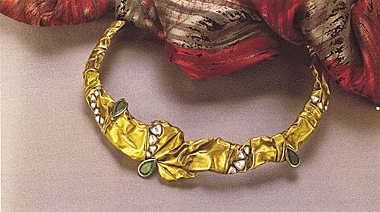
If you're new to Perfume Shrine's Chypre Series, please refer to the following basic articles:
What ARE "chypre perfumes"?
What are the aesthetics of chypre fragrances?
What's the history and zeitgeist of "chypre" evolution?
There are some chypre fragrances that got sidetracked for various reasons, none of which is the fault of their actual scent. Either their heyday ended in an abrupt change in the public's sensibilities or they fell out of production because of a deal that got terminated, or alternatively they became so low profile and obscure that they didn't pique the interest of the general public anymore. Notwithstanding that chance that they got reformulated beyond recognition. Whatever the reason, today's choices are great fodder for rediscoveries, much like a wild safari in the virtual jungle.
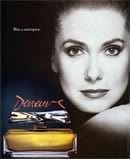
The jewel of the crown is the magnificent, transcedental chypre that was named and devised by none other than the perfumista par excellence, Catherine Deneuve. Her well established love of perfume blossomed into a creation she could call her own; first launched via an agreement with Avon for the US market (which might come as a surprise to some). However, according to her own admission in Elle magazine in 1994, that agreement fell through and the production stalled, maybe because greens were not so popular anumore, making Deneuve a sought after wonder of the online auctions even since.
She had personally been involved in its creation in France in 1986, "like a child in front of a magical toy", smelling hundreds of ingredients and combinations, eliminating (she hinted that the team creating it didn't really know what to do), testing the mods up till she settled for the final three ones. And then, on a shooting trip to Italy, she came up with the winning choice that materialised her vision: an "open" perfume, something that would be trully feminine, something classical and beautiful like a great piece of music, smelling like entering a garden which has an indefinable aroma. She wanted emotion, mystery, perhaps a bit of the Orient mixed in for good measure. {translated from quotes on French Marie Claire 1989}
I was moved by the brave sizlling top of green that combined intense galbanum with naturally eugenol-rich spicy basil, only to be awed upon coming across the lushness of the floral heart that spoke of warm smelling bouquets that rest on a mossy, sensual base that has a touch of the leathery animalic that is to be experienced in the drydown of classic chypre Miss Dior. It even came in a dusting powder which is so gloriously decadent and old-fashioned that I am stumped why it hasn't been featured in one of those highly successful commercially guides of how to become the perfect bombshell or something.
The downside? You must hunt it down on Ebay: be prepared for astronomical bids!
On the bright side, two dupes of it are reputed to be particularly spot on although I haven't tested them myself: Cannes from Long Lost perfumes (said to be a little sharp)and the Deneuve Type by DSH (said to be a tad richer)
Official notes for Deneuve:
Top: Green notes, Galbanum, Bergamot, Neroli, Basil, Aldehyde
Middle: Rose, Muguet, Jasmin, Orris, Ylang-Ylang, Violet, Hyacinth
Base: Moss, Musk, Cedarwood, Sandal, Civet
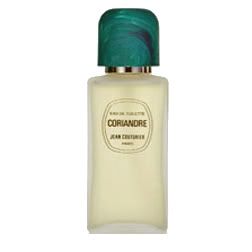
It first piqued my interest when I read Susan Irvine's desrciption of it: "fit for a red headed Raymond Chandler heroine". Perfume Shrine has long worshipped the noir heroines and their universe and this was like a bowl of cream in front of a hungry kitten: irresistible!
Subtle and refined, it didn't speak of the femme fatale so much, but of a patchouli and geramium wreath around roses of a dark red hue, an elegant missile of indoors denotation. Contrary to its name, it doesn't predominantly smell of coriander, although there is discernible spiciness to it that does not recall the culinary. The green pong of angelica makes it dry and somehow young despite appearences.
Created in 1973 by Couturier's own wife Jacqueline, who was Grasse-trained and an heir to perfumers, it was the foundation on which the Couturier Parfums brand was established. It comes in a bottle topped by a green malachite-looking cap, beautifully veined.
Coriandre has been a little surgically enhanced (this happened in 1993), but it didn't involve a complete face-lift which is good news to its acolytes. Consider yourself honoured and not humbled to be included in the latter.
Available from newsparfums.com and other etailers for reasonable prices.
Official notes for Coriandre:
Top: Coriander, Aldehydes, Angelica, Orange blossom
Middle: Rose, Geranium, Jasmine, Orris
Base: Patchouli, Sandal, Vetiver, Civet
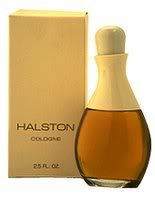
Halston by the american designer Roy Halston Fronwick stops at the Disco end of the Silk Road, being launched smack down in the middle of the 1970s decade (in 1975) in a bottle designed by Elsa Peretti, a designer famous for her "natural", organic shaped jewel designs for Tifanny. Those were the times that chypres were still in favour and its minty aroma that opens on green notes allied with marigold and bergamot, seguing to a lathery soapiness of orris, jasmine and rose touched with a little woodiness were alluring to the audiences of Studio 54. Then soapiness fell out of vogue and its vetiver-laden base with a slight smokiness of incense and moss to it was antithetical to the heavy drum n'bass of the 80s amber perfumes that dominated the corporate world, too busy to go dance recklessly under strobe lights.
Still, Halston manages to survive today as something that smells unique and invitingly warm. I was deeply surprised when Agapi Vardinoyiannis, the socialite wife of a tycoon, divulged casually upon being asked on the familiar smell emanating that it was her preferred signature scent. Surely a woman who can afford anything condoning this long-time forgotten little gem is enough motivation to seek it out.
Official notes for Halston:
Top:melon, green note, peach, bergamot, spearmint, marigold
Middle: jasmine, rose, cedar, orris, ylang ylang, carnation
Base: moss, patchouli, vetiver, amber, musk, sandalwood, incense
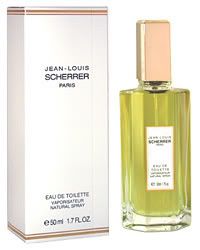
Jean Louis Scherrer (1979)by designer Jean Louis Scherrer is a precious sight in its elegant, tall hexagonal bottle that opens up to verdant glory of liquid emeralds. Green and with the rush of sparkling aldehydes it is soon intensly mossy and floral, recalling a bygone era. The violet note is mostly reminiscent of an iris fragrance, slightly metallic and otherwordly; but the brooding synergy with the other ingredients brings out a luminiscent aura that is tantamount to wearing an expensive necklace of Peruvian pre-Colombian emeralds set on antique gold.
It can be ordered from First in Fragrance/Aus liebe zum duft and Escentual as well as other etailers.
Official notes for Jean Louis Scherrer:
Top: aldehydes, cassis, violet, hyacinth
Middle: tuberose, jasmine, rose, gardenia, carnation
Base: sandalwood, vetiver, civet, moss.
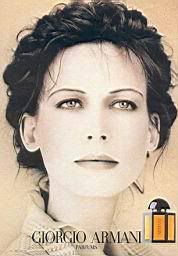
Last but not least, one of the first perfumes that I donned on my juvenile person and came to love, earning lots of compliments in the process and assuming poses well beyond my years was Armani Femme, the original scent that was issued in 1982. Perhaps more green than traditionally chypre, it came in a bottle trifaced like a byzantine triptych, which enchanted my historically bent soul. The aroma of greens merged with the powdery and lush whiffs of flowers and fruits that never became sweet. It was perfume-y and proud of it, asserting its persona beyond doubt with a warm, erotic base that surely made more promises than those delivered to my admirers back then.
Sadly discontinued in favour of newer blunt releases...Shame, mr.Armani, shame.
Official notes for Armani Femme :
Top: Spearmint, Galbanum, Pineapple, Marigold
Middle: Jasmine, Tuberose, Cyclamen, Narcissus
Base: Cedarwood, Oakmoss, Tonka, Benzoin
Pics courtesy of parfumsdepub,okadi,toutsurdeneuve, escentual and Greek jeweler Fanourakis
Tuesday, October 23, 2007
Chypre series 6 ~Masculine chypres: does such a thing exist?

It was about time we focused on the question whether there are indeed masculine fragrances that fall into this category of chypre.
The matter arises because most of the frequently mentioned chypre perfumes are feminine, if you think about it. We also attribute traditionally perceived feminine characteristics to them, such as elegance or sartorial sophistication (for some reason this wouldn't resonate with the Italian man, but I digress).
And the subcategories of floral or fruity within chypre often predispose one to think into such terms, although the seasoned perfumed lover is not restricted by such artificial limitations pertaining to gender.
Like we discussed before Chypre relies on the juxtaposition of bergamot and oakmoss, with the traditional inclusion of labdanum and usually of patchouli or vetiver. There is a comparable fragrance family for men, called Fougère (pronounced foozh-AIR), the French word for fern. In reality this is a fantasy accord because ferns have no real scent of their own. Fougère fragrances have fresh herbaceous notes, juxtaposing lavender with oakmoss on a fern-like base, with an element of Coumarin (the smell of freshly mown hay, naturally found in tonka bean, the seed of a West African tree which contains up to 40% of it).
Masculine fragrances have usually gone the route of the fougère when trying to recreate a forest floor impression instead of chypre, perhaps due to the fact that chypre perfumes have been marketed to women, or because they often included floral elements which are traditionally thought of as feminine in the 20th century (albeit not before!).
Classification is rather dubious territory, as there are countless exempla of diversifications according to the source. Open any guide or reference site and you will see the differences leaping to the eye. Therefore the following is only an attempt to examine whether there is any logical base in attributing scents to this or that odorous category.
For starters, the matter of whether leathery scents are a subdivision of chypres (as they do mostly contain the basic accord)or a seperate category termed Leather/Cuir (according to the French Society of Perfumers) is significant. Going by that leathery and oftentimes tobacco scents very often do smell rather more masculine; such as the various Cuir de Russie versions (Chanel, Creed, Piver etc), Miss Balmain and Jolie madame by Balmain, Caron's fierce Yatagan and smoky Tabac Blond , or Bandit by Piguet, lost semi-legend Jules by Dior and Bel Ami by Hèrmes. You will notice that there is a proliferation of both -marketed as- masculine and feminine scents in the above. Should we or shouldn't we classify them under chypre? The matter remains open for discussion.
Another cross-polination happens, involving woody undertones.
An example that would implicate those as well as a whiff of leathery castoreum is Antaeus by Chanel. Decidely butch, pheromonic almost and a powerhouse, it came out in 1981 by in-house perfumer Jacques Polge. It contains the pungency of male sweat and animalistic nuances with honeyed touches and much as I love it, I can't bring myself to don it on my person. The official notes listed (clary sage, lavender, myrrtle, labdanum, patchouli) do not include the classic accord of chypre despite the cool opening on an earthy animalistic background, yet one is hit with such a composition that might remind one of the family.
Shiseido's Basala is another one, as well as the original Armani Pour Homme.
There is some argument that coniferous elements such as pine essence as witnessed in Pino Sylvestre could be included in a subdivision of chypre.
The flip side of this confusion would be the lighter citrusy notes that might blurr the line between hesperidic and chypre. As chypre compositions contain a discernible citrusy pong via the inlusion of Calabrian bergamot, the notion isn't too far off.
Chanel Pour Monsieur could be such an example. Elegant, refined, conceived while Coco Chanel was still alive, it pays tribute to all the famous men she had known. Created in 1951 by Henri Robert, second nose in la maison Chanel after legendary Ernest Beaux, it plays on a sharp and clean citrusy top that includes lemon, petit grain (the essence rendered from the twigs and leaves of the Seville bitter orange tree, Citrus aurantium) and neroli (the distilled essence of the flowers). It then segues to spicy notes of cardamon and white pepper that invite you closer, only to end on a whiff of cedar and vetiver that retains freshness and discretion for the wearer. Perhaps citrus-aromatic would be a closer categorisation.
And there are various decidedly masculine propositions that reek of the pungency of patchouli and vetiver, notes that are so much used for the modern chypres of the last few years.

The original Aramis for Men could be another case in point, especially given -again!- the suave name that would belie its intentions that open on a crisp note of artemisia and bergamot. It has of course intense woodiness too, thanks to sandal, but with the elements of a classic chypre in place as well. Coupled with a pinstripe suit it goes out to the City to trade stocks and in the lunch break goes off for supposedly a gym session that is in reality an illicit tryst.
Why do such powerful and assertive masculine fragrances are given names that imply a more gentle approach? This could be the subject of another post...
For the time being, please offer your suggestions on masculine chypres and the reason why you classify them thus.

Picsfrom parfumsdepub
Labels:
antaeus,
aramis,
armani,
chanel,
chypre series,
citrus,
fougere,
gentleman,
givenchy,
leather,
masculine,
pour monsieur,
shiseido,
woody
Thursday, May 10, 2007
Attitude by Armani: fragrance review

What's in a name? As it is obvious from the following links (here, here and here), plenty! Names can be poetic, pedestrian, plebian, pleading or pleasant, but they always leave a significant imprint on the ear and the mind.
Not less so when it comes to perfume names.
Hence my slight dissent with the name of the new male fragrance by Giorgio Armani, called Attitude. With a name like that one would expect something of a bombastic olfactory grenade hurled into the air regardless of who catches fire and acting with an air of assumed impunity.
It is perhaps my onerous duty to report that neither of those things is happening.
Although no one could accuse Attitude of smelling badly, a memorable fragrance it ain't. In the plethora of department store offerings it doesn't make a bleep on the screen of consiousness, but melts into the background like the brushstrokes of an experienced painter who caters for the salons of the rich producing pretty prortraits and still lives that have not much to say to the viewer apart from their uniform pleasantness and the signature of someone well-known.
The perceived target group of the new offering would be the man who "affirms himself, cultivates the art of being just, absolutely himself. Without provocation, demands, embarassment, nor complexes." Indeed all the elements of an "attitude", although exactly which avenue that latter might traipse on is not indicated.
"Being himself" or "herself": is there a more confusing way of putting things I wonder. What exactly is a sense of self? Who are we? Are we the sum of our experiences and memories? The product of our respective environments? The predestined momentum that came into being through a higher power? Or are we the sole oeuvre of our own deeper understanding and affirming it proudly to the world?
It's a very perplexing matter and one which demands everyone of us looks deep down into themselves to try and analyse. The search for a personal identity is a life-long journey: constantly evolving upon firmly grown tendencies, if I am allowed to use the paradoxical justaposition of two opposites.
But reverting to the scent, the "attitude" doesn't materialise beyond the pleasant and innofensive. Conceived by esteemed noses such as Annick Menardo, Olivier Cresp, and Alberto Morillas of Firmenich, it includes interesting notes that materialise in different proportions accounting for the ending result.
The official notes according to Osmoz are: sicilian lemon, coffee absolute, cardamom, lavender, smoky accord, chinese cedar, patchouli, opoponax, and amber.
Of those I am tentatively admiting to you that only the hesperide along with the woods traspire clearly and loudly on the paper strip. The rest need much more coaxing to appear if at all.
The coffee absolute accord promise was actually the one I had been dreaming of most of all, as it is one of my favourite notes in fragrances of either persuasion and I was a little disappointed in not getting it to "sing" its magical song on my skin. Lavender has never been a note that I am crazy about (with the exception of a few notable exceptions, one of which is Tauer's Reverie au jardin) so I didn't put too much emphasis on it anyway. It is also quite a traditional element in so many masculine colognes, that it's par for the course. The inclusion of patchouli is of course one of the major trends of the last decade,ever since Angel picked up and showed that the potential of a hippy oil can be greater than imagined and indeed it has softly embraced many fragrances in its cuddly and warm bosom.
What remains poised on skin is a warmish, nice amalgam of smoky woods and light amber that would never distance anyone with its aura, yet would never get you noticed for your wild personality either. You'd have to provide the attitude yourself!
Available from major department stores from May at the following prices:
42euros for 30ml,59euros for 50ml and 71euros for 75ml.
Art photography by Chris Borgman courtesy of his site.
Thursday, April 5, 2007
Incense week: 5.Somber meditative incense for Maundy Thursday

This day, three days prior to the Resurrection, is the day that Christ washed the feet of his disciples and shared his last meal with them, known as The Last Supper, a spartan course upon which he said: "Take, eat; this is my body. Drink of it, all of you; for this is my blood of covenant, which is poured out for many for the forgiveness of sins." Thus establishing the Eucharist and Communion for all Christians thereafter who reenact that Last Supper. In cathedral churches it is the custom for the bishop, to re-enact the footwashing in a special ceremony following the Divine Liturgy.
"Maundy" as it is generally referred to derives from the word mandate, or commandment. That’s because after Jesus washed his disciples' feet, he commanded them to do the same for one another. (John 13:34 :"A new commandment I give unto you, That ye love one another.")
On this day in greek orthodox doctrine we paint the eggs which are traditionally red like the poppies of the field which were supposedly spilled with Christ’s blood, hence they became red (they were formerly white, or so the tale goes). The dyes used are mixed in vinegar which is also reminiscent of the vinegar proffered to Jesus on the cross by the roman soldier who made fun of him when he asked for water. Everything is symbolic, it seems. Egg is often regarded as a symbol of birth and fertility in many cultures or of the cosmos. As it contains life and food to feed it as well, it is a potent means of reminding us of the resurgence of spring and the reproduction of flora and fauna around us. It is even viewed as a symbol of the soul, which was aptly exploited in Alan Parker's 1987 film Angel Heart in which Rober de Niro as the devil himself, devours a whole egg with alarming cool recounting this exact belief.
In medieval Europe, eggs were forbidden during Lent, so it was a prized treat for children on Easter and indeed that is why eggs are offered to children today, even if they take the form of chocolate ones. Eggs were also painted bright colors (red is the traditional one like mentioned) to resemble springtime and the new life it offers. For that last reason lovers often exchanged eggs, similar to Valentine's Day cards today. In ancient Europe, eggs of different colours were taken from nests of various birds as they were prized in the making of talismans. The eggs were often ritually eaten too. The search through the forests for eggs gradually evolved into the habit of the Easter egg hunt, and painted eggs eventually replaced wild birds' eggs. You can read more on the decorated easter egg and its history here and here.
When we sit on the table after Saturday’s midnight service we clink each other’s red egg and he who manages to get his/hers unscathed is proclaimed winner. It’s as if they have preserved the valuable life and they’re now free to consume it and gain strength by it. An endearing tradition….
Maundy Thursday is also the day before crucifixion, when Jesus went to pray alone to gain strength before his ordeal and so it is somber, meditative and melancholy to me. For that reason I picked up incense scents that seem centered, a bit sparse in their character and that could instill an introspective mood of spirituality.
Encens et Lavande by Serge Lutens: The introspection of incense coupled with the clean, sparse atmosphere of lavender. The latter is making a quick and medicinal appearance upon hitting the skin, a clean, nose-decongesting aroma that is usually not what I enjoy and quite different than the lavender of Gris Clair which begins on an antithetical course. There is also the hint of sage, a herbal smell that could be very well remind one of that land where Jesus prayed in the cool air of the night. Incense is light in this fragrance and it takes a somber, smoky, whispery, slightly orientalistic take thanks to light amber that is left on the skin for some time while lavender has evaporated. As if you’re inhaling the aroma of a cloth that has been smoked in the white smoke of an outside burning chalice. I find this an excellent perfume for meditation and it calls upon all calm and collected thoughts.
Bois d’encens by Armani Prive: If we are to forgive mr.Armani for his trespasses discussed yesterday, like we expect to be forgiven for ours, it is thanks to this little gem in his Private collection, bottled into an architectural modern Kotibe wood column of a bottle, topped with a dark red “pebble” . A clean smoky incense that wafts from the forests on the cool wintery air is the impression this makes. In the spirit of Avignon, yet lighter, not as thick and with less staying power which is an utter shame for the hundreds of bucks this goes for, it is easily wearable by anyone who is willing to take a plunge n the mysterious world of incense and does not make difference between the sexes either. The background of lots of cedars smelled from a distance is enough to make one appreciate the austere nature of such a perfume.
Encens Mystic by Crazy Libellule and the Poppies: This relatively new and refreshingly inexpensive French brand is rippling the waters with their fun, cute, completely adorable little solid perfume sticks like lippies that come in many different permutations, collected into three lines: Shanghaijava (with oriental and woody scents), Les Divines Alcoves (with scents of musk and flowers) and Poule de Luxe (comprising scents of unapologetically gourmand tendencies). From their Shanghaijava line Encens Mystic is truly exceptional and really smells more expensive than the mere amount asked (11 pounds on hqhair.com). Being a solid it has the tendency to wear closely to the body and with good tenacity, encompassing notes of Myrrh, Frankincense, Benzoin, Patchouli , clove, a hint of vanilla and Cedar. The result is a rich, pungent incense fragrance that smells like the Incense Series by Comme des Garcons or close to Black Cashmere by Donna Karan. The wax smell is simply non apparent which is a plus for a solid and the pungency of the notes makes a brilliant juxtaposition with floaty clothes and smooth hair. I find it mystical, like its name suggests and quite poised and a delightful surprise to come out of a new house with no credentials of grandeur. For so few bucks a pop it shouldn’t really pose a doubt as to whether it’s worth purchasing. Just do it.
Next intalment talks about deep and solemn incense.
Painting of The Last supper by Carl Bloch courtesy of Carlbloch.com
Wednesday, April 4, 2007
Incense week: 4.Traitorous incense for Holy Wednesday

Most people know Judas Iscariot as the classic traitor, the archetype of such a justifiably hateful character: crossing his master for 30 pieces of silver, betraying him with a kiss. It is such a fixed notion in pop culture that we see references of that very act of betrayal in balkan folk verse to U2 songs.
It is also no accident that in many Christian communities there is the tradition of burning a representation of Judas before the Resurrection. Great attention is put into the comparison of the sinful woman who is saved to the chosen apostle who is lost in the scriptures.
In short Judas is doomed. Os is he?
Villains are always exciting characters to follow in literature and if one -like Nietzsche, who by the way was the son of a man of religion (it figures!) - takes an interest in the scriptures solely in their literature capacity and not their alleged apocalyptical meaning, one sees that a proper drama requires at least one capable villain. All the more power to him if there is the possibility of him falling from grace in the end bringing the much needed aristotelic katharsis.
The mention that Judas was of a prominent Judaic family and that he was educated, in sharp contrast to most of the other apostles, is something that does not –in my mind- preclude innocent and coincidental associations. It seems to me that there is an underlying effort to stress that the new emerging religion, Christianity, is thus targeted to the socially and economically unprivileged, whose vast numbers guarantee a great success and a rapid spread of the new word of course. But let’s not be so cynical…
However the recent revelation of the lost Gospel of Judas reveals a different facet of the man that is perhaps even more intriguing. That of the misunderstood here, the one who must bear a cross of his own (as does any man, really), the one who is chosen above others to bring about the difficult task that is needed to bring about salvation through resurrection. In his own words Judas Iscariot talks about how he has been guided by Jesus himself who revealed to him the demanded task: to betray him, Jesus so as to affirm his rule of death and convince the world of his divinity. Although this last part does not shed a favourable light on Jesus (who is basically dooming a simple man to promote his own end) and therefore it has been vehemently denied by the official dogma of the church leaving the study of the gospel to the hands of historians and not theologists, it is so very meaningful and implicating that it requires its own path of thought.
Of course Judas’ gospel is not the only lost one….In fact there are many, one of which is Mary Magdalene’s one. But the subject of any strong faith getting stronger by crashing any notion of weakness is a vast one and the place is not appropriate here to embark on such deep waters.
I have picked nevertheless a handful of tricky, misunderstood incense fragrances that reflect the misapprehension we sometimes reserve for that which we deem fixed idea, just like we have possibly done to Judas.
Snake Oil by Black Phoenix Alchemy Lab: It’s hard to pass up such a great opportunity to talk about this one with the eminently appropriate name. I assure you nevertheless that it is as much chosen for its ability to smell different on each separate application rendering the poor wearer crazy with anticipation on how it will evolve upon the skin. The thick smokiness of the incense cut with a smidgeon of citrus mingles with earthy, dirty notes of patchouli and musk into a symphony of darkness that seems quite potent at first.
As it is quite medicinal when fresh, it tends to mellow and gain complexity and sweetness as the ageing process is on its way; and indeed like a good wine it gains the veil of vanillic warmth that makes it seem much more innocent and lovable than it is, much like those misunderstood characters that we hate we love. Quite strong it is also considered by some to be sexy. Don’t count me in the latter group but thought you might want to know.
Mania by Armani: Why is this one surfacing into a post about incense and traitorous scents, you might ask. You do have a point. It is mr.Armani, bless him chuckling in his tailored sleeves, who is the traitor. Because he had the nerve to discontinue the old slightly masculine, incensy musky and woody version of the scent with that name bottled in a grey bottle with an anthracite cap and replace it with a common pink fruity floral that’s a dime a dozen with a beige cap. For shame, mr. Armanis. For shame!
Incense by Norma Kamali: Take your pills (every one you’ve ever been presecribed, you’ll need those suckers) and slowly, tentatively inhale this mysterious, intense potion. You will find yourself in a swirl wind of such mental turmoil that the afore-mentioned Nietzsche’s troubles will seem like child’s play to you. Prepare yourself for a dose of South American resin, copal, that is completely traitorous to the canonical frankincense and myrrh of more conventional incense-centered perfumes. The northern Lacandón Maya of lowland Chiapas in southern Mexico offered copal incense (pom) to their gods, a material made from the resin of the pitch pine (Pinus pseudostrobus). Norma Kamali is transporting us into a pagan ritualistic celebration like the religious iconoclast that is the theme of the day. Tread with caution; it can’t be stressed enough!
Next instalment -with yet a different spin- to come up shortly!
Pic comes from the film Zwartboek courtesy of Athinorama.
Labels:
armani,
black,
BPAL,
easter,
greece,
incense series,
mania,
norma,
norma kamali,
review,
snake oil
Subscribe to:
Comments (Atom)
This Month's Popular Posts on Perfume Shrine
-
We have a glorious giveaway today on Perfume Shrine, courtesy of niche perfumer Andy Tauer and his Advent calendar project he conducts every...
-
Listening to the deep baritone of Thorsten Biehl’s voice confirms what I suspected from wearing his perfumes: he does not take fools gladly,...
-
First things first: We are honored to participate for the 6th consecutive year in the Advent Calendar of Tauer Perfumes . You know what thi...
-
When I was testing Une rose chyprée for the first time, I was eating creamy Greek yoghurt sprinkled with shredded Valhrona 72% dark chocola...
-
It's unusual in perfumery for the start of this century to encounter a modern composition which focuses on that loaded term which is dre...
-
Coco by Chanel must be among a handful of fragrances on the market to have not only one, but two flankers without being a spectacular marke...
.jpg)









